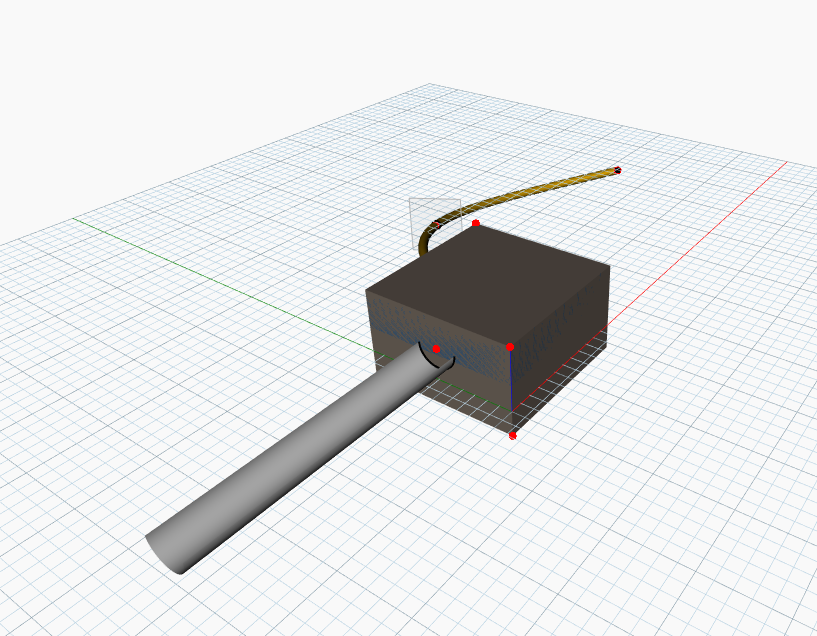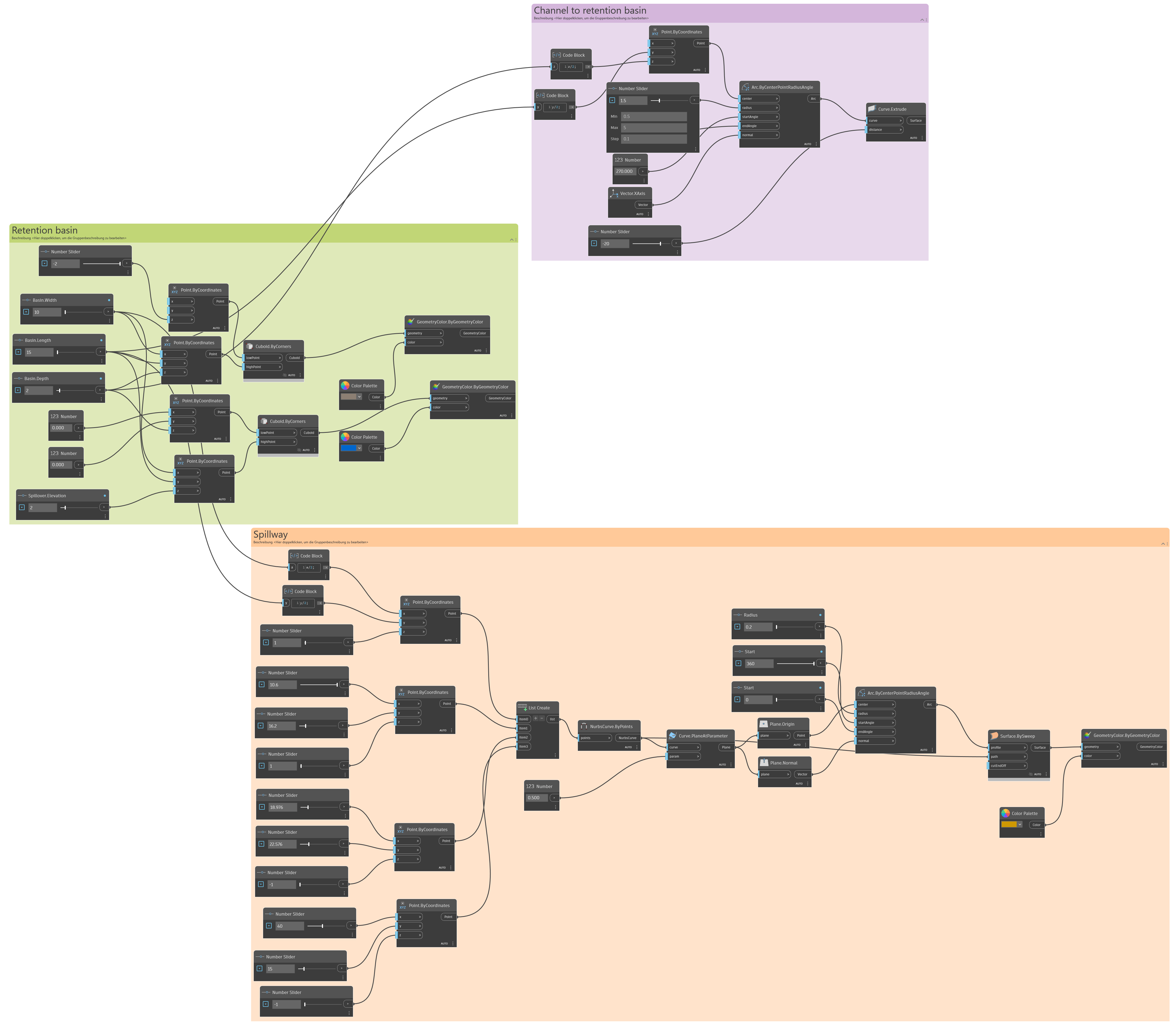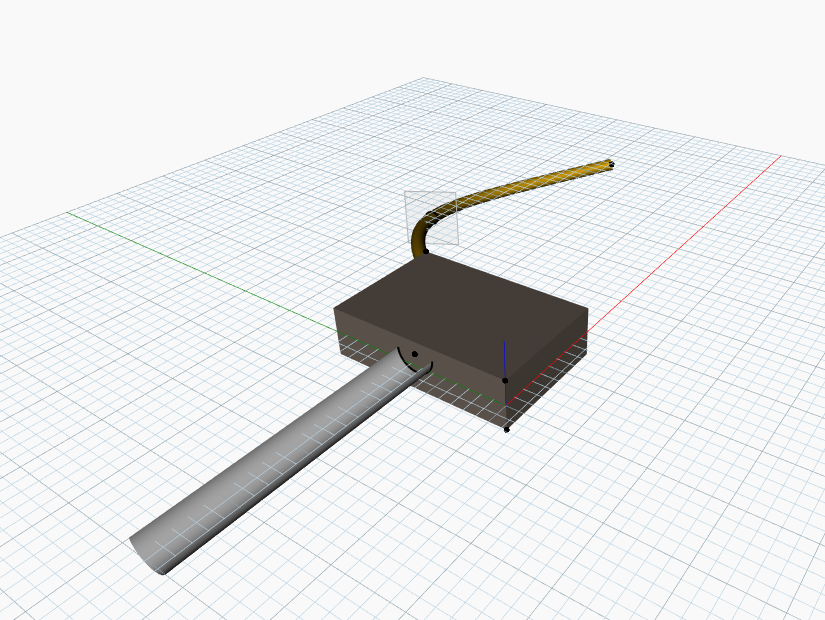Design challenge
Flood retention basins are essential for managing stormwater and preventing flooding by temporarily storing excess water. As urban areas grow, effective flood management becomes even more crucial. Designing these basins is challenging, requiring a balance between storage capacity and spillover capacity to ensure efficient flood control while considering space and budget constraints.
The storage capacity depends on factors like watershed size, rainfall intensity, and storm duration. Larger basins are needed for heavier rainfall, but they also require more land, which is often scarce in urban areas. Typically, a few strategically located basins are used for effective flood management.
Spillover capacity ensures the basin can handle excess water during extreme storms when full. A well-designed spillway directs overflow safely, preventing erosion and flooding. The challenge is to design a spillover system that handles excess water while minimizing construction costs and land use.
In conclusion, designing a flood retention basin requires balancing storage and spillover capacities. Increasing storage by enlarging the basin can risk overflow, while overbuilding the outlet system reduces storage space and raises costs. Engineers must adjust parameters like depth, shape, and outlet size, often using parametric modeling to find the optimal design.
Parametric Model
Using the information gathered from the design challenge, the flood retention basin was modeled in Dynamo BIM. Dynamo provided a parametric environment that allowed for dynamic adjustments to the basin’s geometry, enabling performance analysis under various storm scenarios to ensure it met flood control standards. The basin’s length, width, depth, and spillover elevation were defined. Following the tutorial from the Department of Civil Systems, a cuboid for the basin and the spillway outlet were constructed.
Flood retention basin design varies based on land availability, flood control needs, and budget. A deep, narrow basin with underground storage offers high capacity but comes with higher costs due to excavation and complex overflow management. In contrast, a shallow, wide basin is cheaper and easier to build but has lower storage capacity and may struggle with extreme rainfall, requiring a longer spillway. The challenge is balancing these factors to create a basin that manages flood risks effectively without exceeding resource limitations.
Design alternatives
The project aimed to explore different flood retention basin designs to ensure optimal performance under various storm conditions. Using Dynamo BIM, we evaluated how each design affected water storage and overflow management, leading to four viable alternatives that balance engineering needs, environmental factors, and practical constraints.
| Alternative | Dimensions | Storage volume | Spillway | Key features |
| 1 | 150 m length, 100 m width, 2 m depth | 30,000 m³ | 20 m length, 2 m width | Shallow, wide basin; large surface area, limited storage. Requires significant land. |
| 2 | 125 m length, 125 m width, 5 m depth | 78,125 m³ | 10 m length, 1.5 m width | Deep, narrow basin; high storage, careful flow management needed. |
| 3 | 150 m length, 100 m width, Stages: 2 m, 4 m, and 6 m depths | 30,000 m³, 60,000 m³, 90,000 m³ | 15 m length, 2 m width | Multi-stage, adjustable depth for varying storm intensities. Efficient land use. |
| 4 | 100 m length, 100 m width, 10 m depth (underground) | 100,000 m³ | 8 m length, 2 m width | Underground basin, surface spillway; ideal for urban areas with limited land. |
For two rainfall events in a 100 ha catchment, we calculated the required storage:
- Rainfall (5-year event, 30 min): 20,100 m³
- Rainfall (100-year event, 18 h): 86,400 m³
The basins can handle the “normal” rainfall, but during extreme events like the 100-year storm, basins like Alternative 1 will need to manage overflow. Balancing storage and spillover capacity for both regular and extreme events is key to effective flood control, protecting infrastructure and the environment.
Examples for designs:
Alternative 1
Alternative 2


